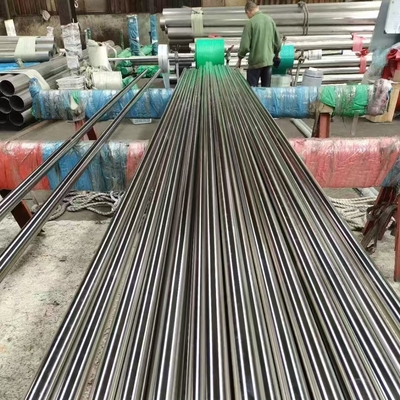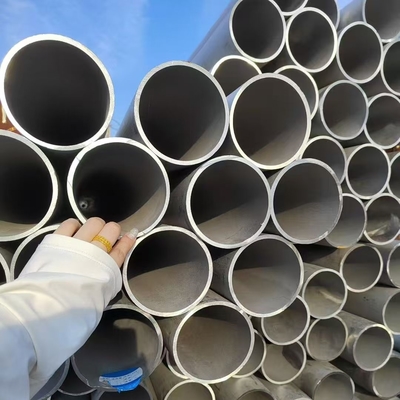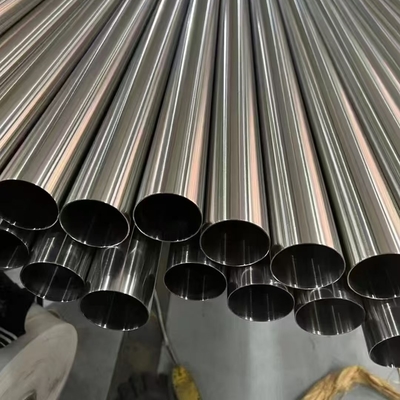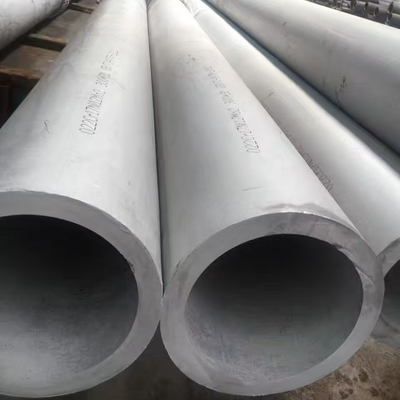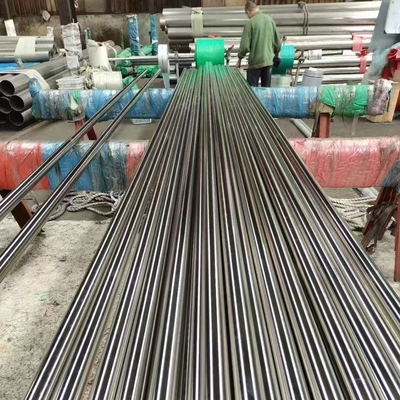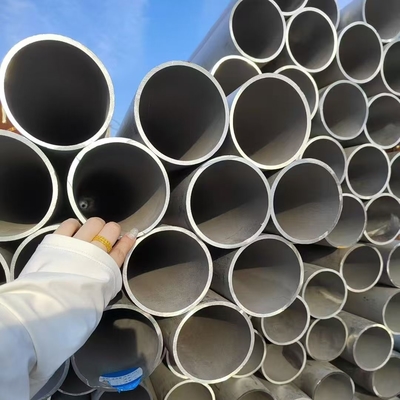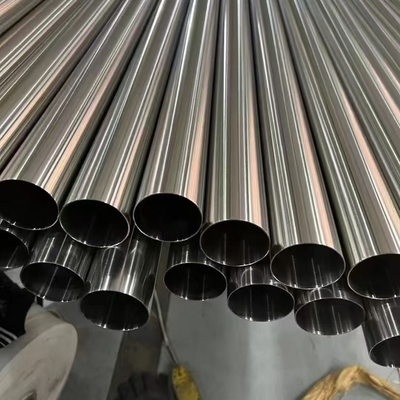-
 Raian IonescuMaterial quality very good. we have cooperate more than 10 Years. They trade lots kinds of steel material. All material quality good. They duty for all material quality. We are planing continue cooperate with them in the future
Raian IonescuMaterial quality very good. we have cooperate more than 10 Years. They trade lots kinds of steel material. All material quality good. They duty for all material quality. We are planing continue cooperate with them in the future
SCH40S TP304L Stainless Steel Seamless Pipe DN100 DN150 DN200 Custom Cutting Any Length
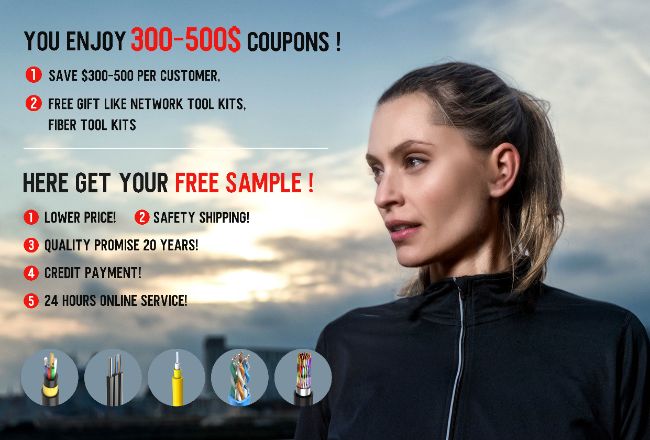
Contact me for free samples and coupons.
Whatsapp:0086 18588475571
Wechat: 0086 18588475571
Skype: sales10@aixton.com
If you have any concern, we provide 24-hour online help.
x| Products | Stainless Steel Seamless Pipe | Grade | 304L |
|---|---|---|---|
| Diameter | DN10 - DN400 | Length | 6m Or Custom Cutting Any Length As Request |
| Standard | ASTM EN | Service | Cutting |
| Loading Port | Shanghai Port | Thickness | 4.0 - 50.0mm |
| Highlight | SCH40S TP304L stainless steel pipe,stainless steel seamless pipe DN100,custom cut stainless steel pipe |
||
SCH40S TP304L Stainless Steel Seamless Pipe DN100 DN150 DN200 Custom Cutting Any Length
Products Specification
| Products Name | 304L Stainless Steel Seamless Pipe |
Grade: |
304 304L 309S 310S 314 316L 316Ti 321 329 347H 410 2205 2507 S32760 904L 254SMO and equal grade in GB JIS EN DIN Standard |
| Standards: | ASTM A213M-94b ASTM A249M-94a ASTM A269-94a ASTM A312M-94b,ect. |
| DIN 17456-85 DIN 17458-85 DIN 17459-92.ect | |
| JIS G3446-1994 JIS G3448-1997 JIS G3459-1997 JIS G3463-1994,ect. | |
| GB13296-1991 GB14975-2002 GB14976-2002,ect. | |
| Size: | ND5 - DN400 |
| Length: | 6m length or cutting any length as request |
| Applications: | fluid and gas transport, structure , boiler, heat exchanger, super heater |
304L stainless steel tubing is a versatile and widely used austenitic chromium-nickel stainless steel. Its defining characteristic is its low carbon content (typically ≤ 0.03%), designated by the "L" suffix. This significantly enhances its resistance to sensitization (carbide precipitation) during welding and exposure to high temperatures (425-860°C / 800-1580°F), thereby maintaining excellent corrosion resistance in welded structures and applications prone to intergranular corrosion.
Key Parameters & Properties
-
Chemical Composition (Typical wt%, ASTM A213/A269/A312):
-
Carbon (C): ≤ 0.030% (Key differentiator from 304)
-
Chromium (Cr): 18.00 - 20.00%
-
Nickel (Ni): 8.00 - 12.00%
-
Manganese (Mn): ≤ 2.00%
-
Silicon (Si): ≤ 0.75%
-
Phosphorus (P): ≤ 0.045%
-
Sulfur (S): ≤ 0.030%
-
Nitrogen (N): ≤ 0.10%
-
Iron (Fe): Balance
-
-
Mechanical Properties (Typical Annealed Condition - ASTM A213/A269):
-
Tensile Strength: ≥ 485 MPa (70 ksi)
-
Yield Strength (0.2% Offset): ≥ 170 MPa (25 ksi)
-
Elongation (% in 50mm / 2in): ≥ 40%
-
Hardness (Rockwell B): ≤ 92 HRB
-
Note: Cold working (e.g., for seamless tubing) can significantly increase strength and hardness.
-
-
Physical Properties:
-
Density: 8.0 g/cm³ (0.289 lb/in³)
-
Melting Range: 1400 - 1450 °C (2550 - 2650 °F)
-
Electrical Resistivity: 72 μΩ·cm
-
Thermal Conductivity: 16.2 W/m·K (at 100°C)
-
Coefficient of Thermal Expansion: 17.3 µm/m·°C (20-100°C)
-
-
Corrosion Resistance:
-
Excellent resistance to a wide range of atmospheric environments, many corrosive chemicals, foodstuffs, and sterilizing solutions.
-
Good resistance to oxidizing acids (e.g., nitric acid).
-
Resists corrosion in potable water and many organic acids.
-
Susceptible to pitting and crevice corrosion in chloride environments (seawater, de-icing salts); not as resistant as 316/L.
-
Subject to stress corrosion cracking (SCC) above approx. 60°C (140°F) in chloride environments.
-
Key Standards
304L tubing is manufactured to meet various international standards specifying dimensions, tolerances, testing, and certification requirements:
-
ASTM (American Society for Testing and Materials):
-
Seamless Tube: ASTM A213 (Boiler, Superheater, Heat Exchanger), ASTM A269 (General Service)
-
Welded Tube: ASTM A249 (Boiler, Superheater, Heat Exchanger), ASTM A312 (General Corrosion Resistant & High-Temp Service), ASTM A358 (EFW - Electric Fusion Welded, higher pressure)
-
Pipe: ASTM A790 / A999 (Seamless & Welded Ferritic/Austenitic SS Pipe)
-
-
ASME (American Society of Mechanical Engineers): SA213, SA249, SA312, SA358 (Often identical to ASTM specs but adopted for ASME Boiler & Pressure Vessel Code use).
-
EN (European Norm):
-
EN 10216-5 (Seamless pressure tubes)
-
EN 10217-7 (Welded pressure tubes)
-
EN 10357 (Austenitic welded tubes for general purposes)
-
Material Designation: 1.4306 or 1.4307 (X2CrNi19-11 or X2CrNi18-10)
-
-
Other: DIN, JIS (Japanese Industrial Standards - SUS 304L), GB/T (Chinese National Standards - 00Cr19Ni10), ISO.
Closest Grades / Equivalent Designations
-
304 (1.4301 / SUS 304): The standard version with higher carbon (≤ 0.08%). Offers slightly higher strength but is more susceptible to sensitization during welding. 304L is preferred for welded components where corrosion resistance is critical.
-
316L (1.4404 / SUS 316L): Contains Molybdenum (2-3%), offering significantly improved resistance to pitting/crevice corrosion in chloride environments and higher strength at elevated temperatures. More expensive.
-
321 (1.4541 / SUS 321): Stabilized with Titanium (Ti) to prevent sensitization during high-temperature exposure (above sensitization range). Used where welding followed by high-temp service occurs. Slightly less formable than 304L.
-
347 (1.4550 / SUS 347): Stabilized with Niobium (Nb) for similar reasons as 321.
Common International Equivalents:
-
UNS: S30403
-
EN: 1.4306, 1.4307 (X2CrNi19-11, X2CrNi18-10)
-
JIS: SUS 304L
-
GB: 00Cr19Ni10 (022Cr19Ni10)
-
DIN: X2CrNi19-11
-
AFNOR: Z3 CN 18-10
-
SS: 2352
Typical Packaging
Packaging aims to protect the tubing surface from damage, contamination, and corrosion during transport and storage. Common methods include:
-
Bundling: Tubes are securely strapped (plastic or steel bands) into bundles of uniform length.
-
End Protection: Plastic caps or plugs are often used to protect tube ends from dents and prevent ingress of dirt/moisture.
-
Wrapping: Bundles are frequently wrapped in:
-
Plastic Film: Clear or opaque polyethylene stretch film provides basic protection against dust, dirt, and minor moisture.
-
VCI Paper/Plastic: (Volatile Corrosion Inhibitor) Releases protective vapors to prevent surface rust during transit/storage, especially in humid environments. Often used inside plastic wrap.
-
Waterproof Paper: Heavy-duty coated paper.
-
-
Wooden Crates/Pallets: Larger bundles or valuable/high-precision tubes may be packed on wooden pallets or within sturdy wooden crates for maximum protection and ease of handling with forklifts.
-
Marking: Bundles/crates are clearly marked with material grade (304L), size (OD x WT x Length), standard, heat number, quantity, manufacturer ID, and often weight.
Primary Applications
304L tubing's excellent corrosion resistance, formability, weldability, hygiene, and strength make it suitable for a vast array of industries:
-
Chemical & Petrochemical Processing: Transfer lines, instrument tubing, heat exchanger tubes, reactor components (handling organic acids, solvents, nitric acid).
-
Food & Beverage Processing & Equipment: Brewing, dairy, juice lines, processing equipment, sanitary fittings (due to ease of cleaning, corrosion resistance, non-contamination).
-
Pharmaceutical & Biotechnology: Process piping, transfer lines, bioreactors, filtration systems, high-purity water systems (hygiene, corrosion resistance, cleanability).
-
Architecture & Construction: Handrails, structural applications (exposed to mild atmospheres), aesthetic trim.
-
Heat Exchangers & Condensers: Tubing in shell-and-tube heat exchangers, condensers (for compatible fluids).
-
Automotive: Exhaust components (manifolds, catalytic converter housings - though 409 is more common for main exhaust), fuel lines (older systems), trim.
-
Water Treatment & Distribution: Potable water pipes, distribution systems, wastewater treatment components.
-
Medical Devices: Instrumentation, implants (often requiring higher grades like 316L VM), surgical tools.
-
Pulp & Paper Industry: Bleaching equipment, digesters (specific sections).
-
General Engineering: Hydraulic lines, instrumentation tubes, pneumatic systems, general fabrication.
Key Advantages
-
Excellent corrosion resistance in a wide range of environments.
-
Superior weldability without sensitization concerns (vs. 304).
-
Excellent formability and ductility.
-
Good low-temperature toughness.
-
Ease of cleaning and maintenance.
-
Hygienic properties.
-
Non-magnetic in the annealed condition (magnetic response can increase with cold work).
-
Readily available and cost-effective (compared to higher alloys like 316L).
![]()
![]()
![]()
![]()




